Americus' Amazing Architecture
Story and photos
by Kathleen Walls
Published
11-29-2024

If walls could talk, the building in
Americus, Georgia would have some fascinating tales to tell.
Americus has a vast variety of architectural styles, mainly
Victorian in nature. Oh, the history they have seen!
Windsor Hotel

One of my favorites there is the
Windsor Hotel.
The five-story, red brick, Victorian structure complete with
towers, balconies, and a three-story open atrium lobby was
originally designed to have 100 rooms. It is a combination of
several styles blended to create an unforgettable building. The
tower is Romanesque, and the stepped roof is Flemish.

When you step into the lobby, it's like a
trip back to a more elegant time. The two chandeliers are not
original but are circa 1890. The mirror on the back wall of the
lobby dates to before the Civil War. A mahogany phone booth, one
of the highlights of the lobby, is authentic, although not
original, to the hotel. The clock on the second-floor lobby is
the only original furnishing. It came from the Windsor jewelry
shop. It has been restored and is on permanent loan from the
Sumter Historic Trust.
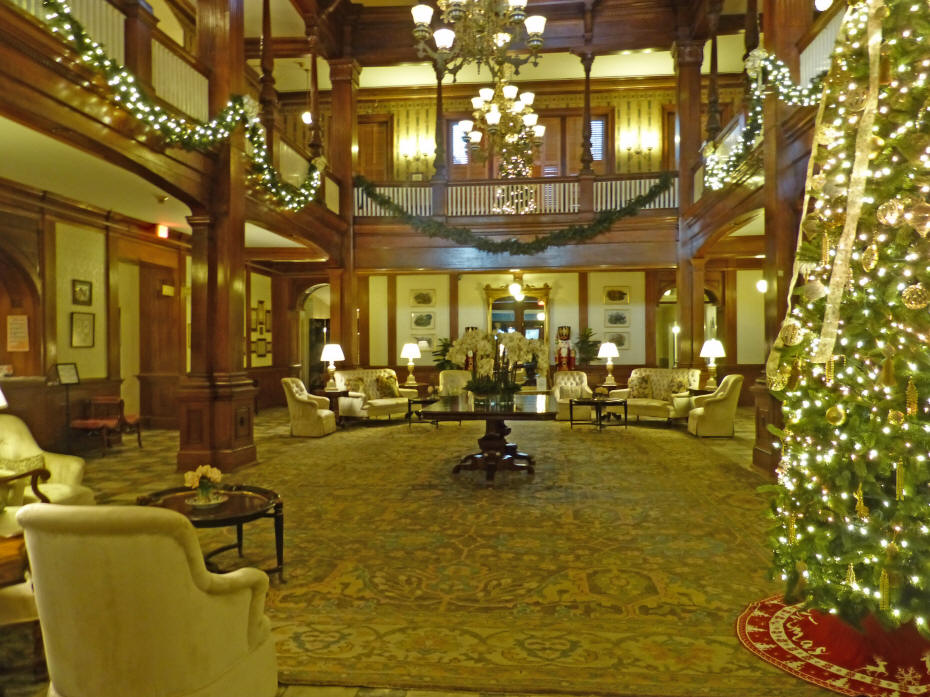
The Windsor opened with a magnificent ball
on June 16, 1892. Thousands attended the opening and over 100
guests registered on the first day.
However, the hotel's popularity declined,
and the building went on the auction block. On September 5,
1899, Charles A. Fricker, the jeweler, bought the Windsor for
$40,000. Even though the hotel was completely renovated with
electric lights, new elevators, telephones, and steam heat, it
never regained its former Victorian-era glory until recently. In
August 1974, having operated for some time as apartments, the
hotel closed its doors after 82 years. The bankrupt hotel came
into the possession of the City of Americus and the hotel
reopened on September 20, 1991, beautifully restored. When I
visited it recently, it has 53 rooms each decorated differently.

The Roosevelt Boardroom has been nicknamed
the "Lucky Room" because so many successful political campaigns
began there.
In her time, the Windsor played host to the
famous and the infamous. John L. Sullivan, former heavy-weight
boxing champion, Congressman William Jennings Bryan, three-time
Democratic presidential nominee, The Governor of New York and
soon-to-be President Franklin D. Roosevelt and, Al Capone, who
posted an armed guard at the foot of the stairs. Lindbergh
played pool there. President and Roselyn Carter were frequent
visitors and have stayed at the hotel. Their suite is named the
Carter Presidential suite.

Like every famous hotel, the Windsor had
its resident spirits. There was a woman who worked there in the
early 1900s as head housekeeper and her small daughter who lived
in the hotel. They were murdered, supposedly by her wealthy
lover. Another spirit was a man named Floyd who worked for years
there as a bellman. It's ironic that the restaurant's pub is
named for him since he supposedly never drank.
Rylander Theater
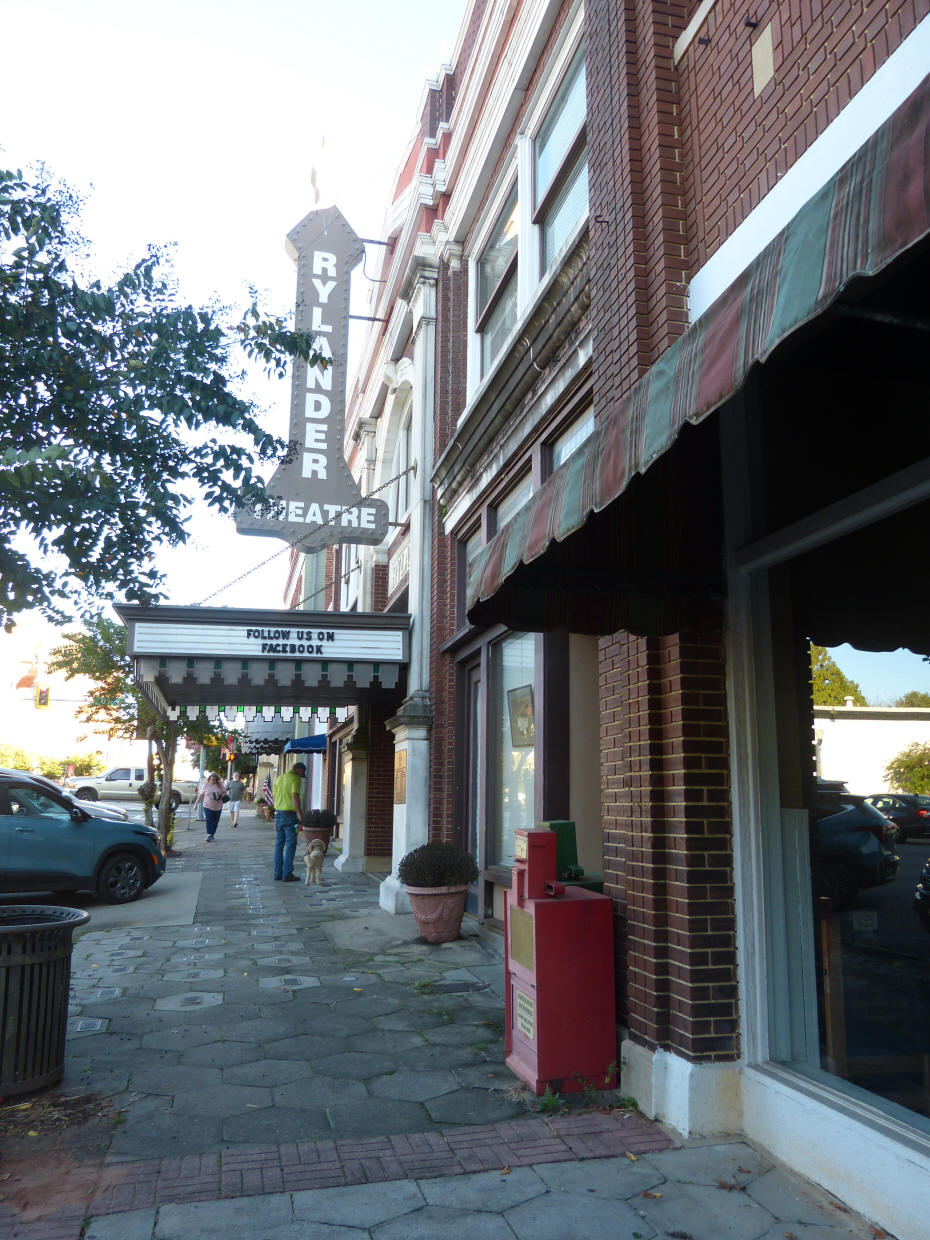
Another treasure that for many years lay
dormant is the Rylander
Theater. For decades after it closed in 1951, it sat hidden
behind a row of offices. Just a few old timers remembered its
existence. Heather Stanley, the theater's Managing Director,
told me many local people never knew it was there until it
reopened in 1999.

Walter Rylander, Sr., the owner of the
local Ford dealership, who saw silent movies in 1919 when he
visited New York City, built the Rylander. The beautiful art
déco theater opened in 1921 with a stage and dressing rooms for
live shows and a screen for showing silent films. Its opening
act was the touring company of the Broadway play, Lightnin'.
In its heyday, it featured the Ziegfeld Follies, World War I
sharpshooter Sgt. Alvin York, and Charlie Chaplin films.
It closed when the company running it
opened a new movie theater elsewhere in town and until the fall
of 1999, only Fred the Friendly Ghost and perhaps the restless
spirits of former actors were the only ones occupying the
theater.
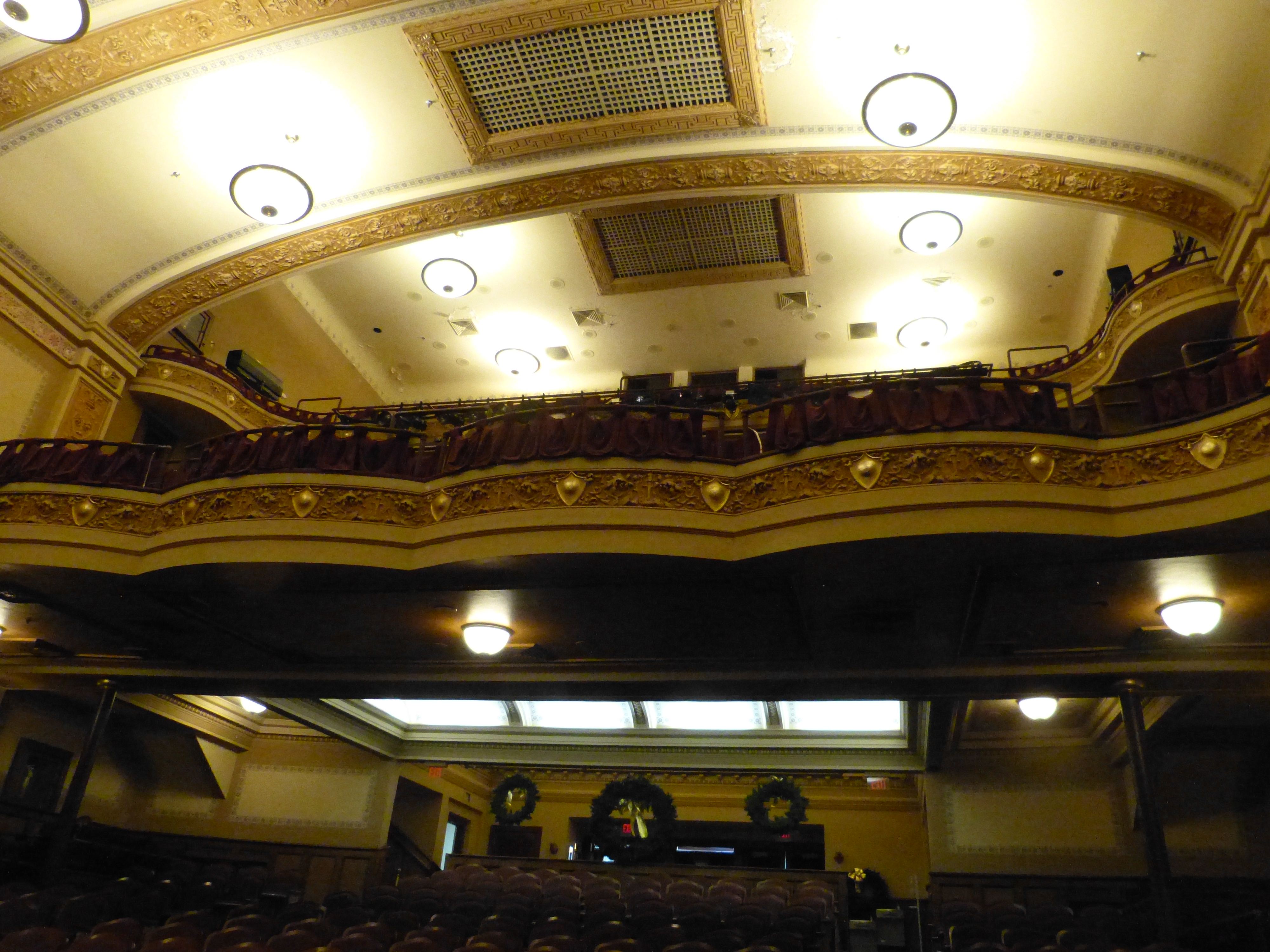
Today the Rylander has been completely
restored to its former glory. Much of the new has been added,
but whenever possible, the original craftsmanship was restored.
The stencils and plaster ornamentation is reminiscent of a more
elegant age. It also is home to one of only three theater pipe
organs in Georgia theaters, a 1928 restored Moller theater pipe
organ known as "Little Mo." It features live performances. Of
course, Fred is still there.
Heather told us of an incident when Fred
made his presence felt. An actress had gone upstairs and was
returning down the stairs alone when she stumbled and almost
fell. She felt a strong hand on her back, preventing the fall.
Fred proved his usefulness. Heather said they have often felt
his presence, always in a good way. She commented that Fred is
never felt on Mondays. Perhaps he was a theater employee in his
human life and was off on Mondays.
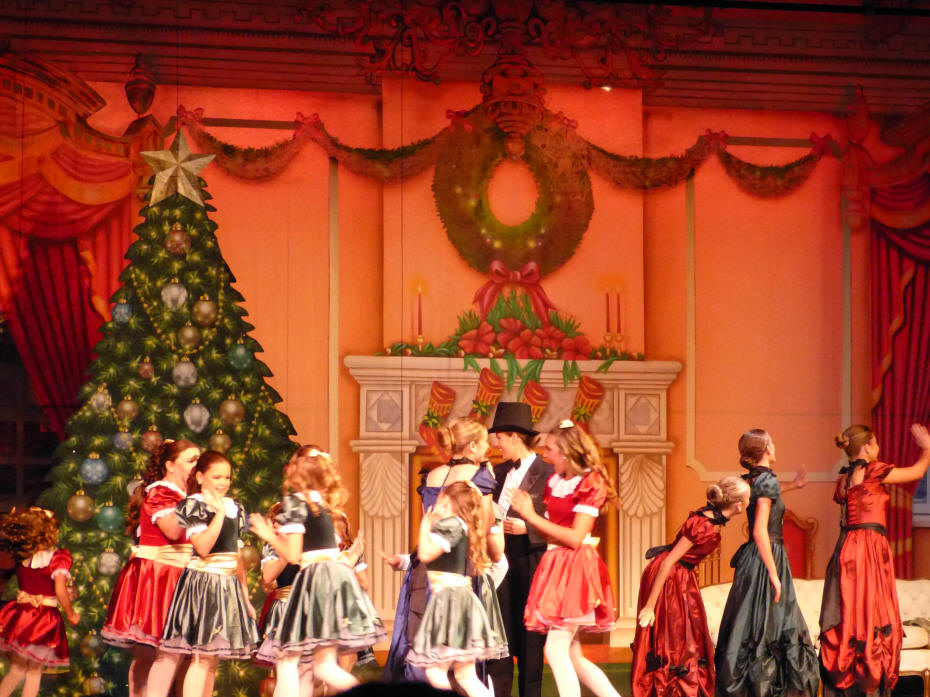
I got to watch a performance of The
Nutcracker and loved both the old-fashioned beauty of the
theater and its modern conveniences, such as great lighting and
sound and the beautiful backdrops behind the talented young
dancers.
Empire Bank Building
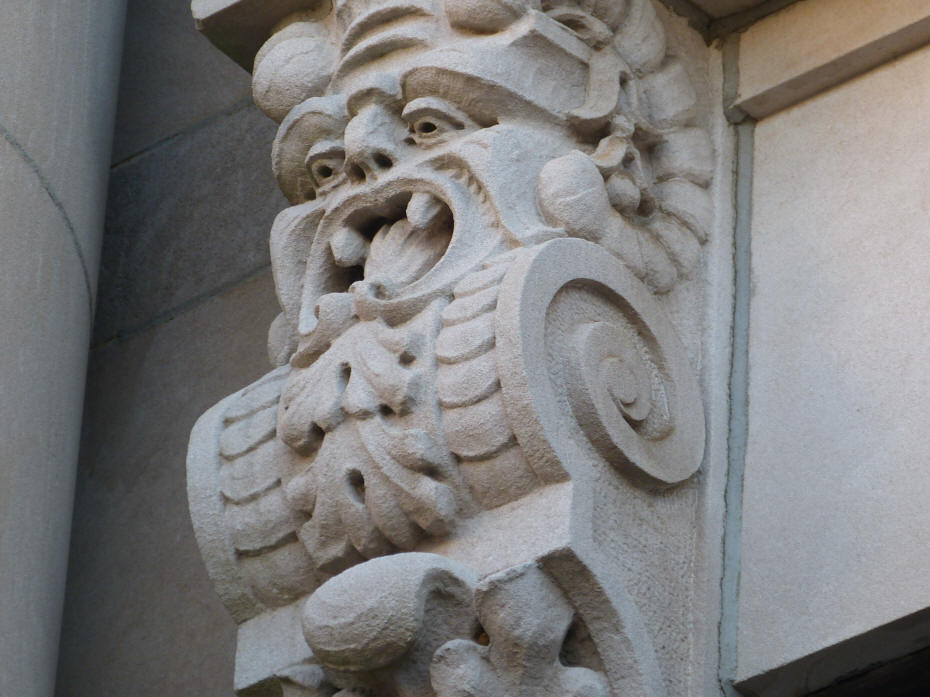
Just down the street from the Rylander
Theater and across from the Windsor Hotel, the Empire Bank
building, completed in 1911, is a Neoclassical Revival treasure.
It has four columns and gargoyles at the on the sides. Each
gargoyle is different. My favorite is the one that is sticking
out its tongue like so many young social media persons.
Presbyterian Church

The
Americus
Presbyterian Church, located at 125 South Jackson Street,
was built in 1884, is a Victorian-Gothic building and the oldest
existent church in Americus. The staff kindly let us in to view
the interior. Our guide told us, "We were founded in 1842, but
our first sanctuary burned down. This was built in 1884. If you
look up, it is meant to look like the bottom of a ship."
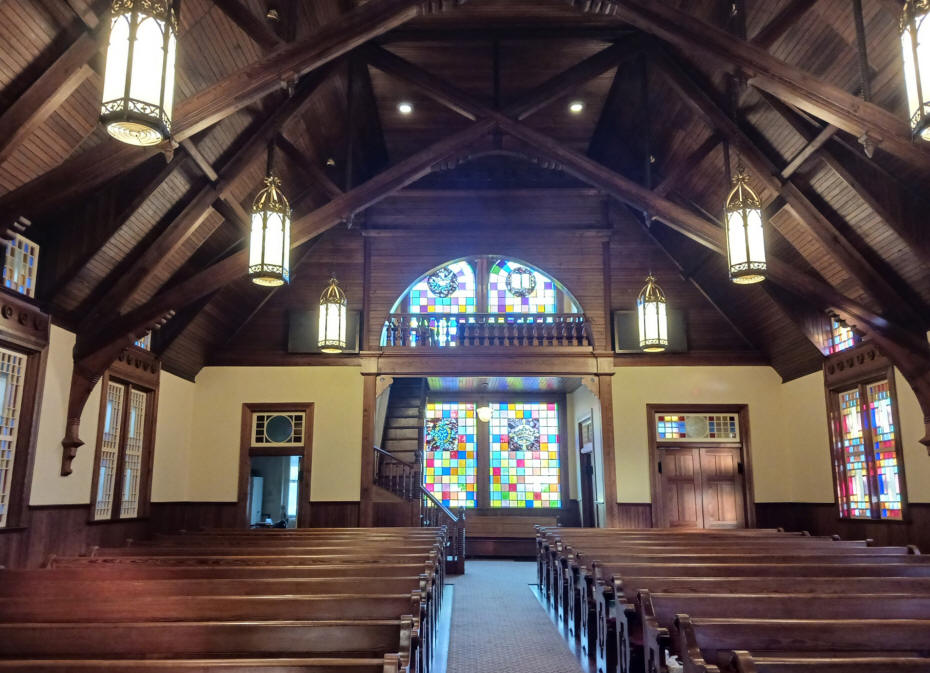
Looking up, it really seemed like you were
looking down into the hull of a ship. The ceiling is narrow
planks, and the support beams seem to curve like a ship's hull.
The wood used is all Georgia pine. One special wood is called
Curly Pine. It is a genetic deviation that you can only get by
chance.

Some of the windows relate to watery
Biblical themes like Noah's ark or Jonah and the whale. One
window is different; it was given in memory of Louisa Wheatley,
the builder's wife. She helped him a great deal and died a year
after the church was finished. The sun comes through and shines
on the pew where she sat. Another window is a Tiffany. The rest
are Queen Anne style glass.
The bell is the original bell and the
oldest bell in Americus. The fire department used to use it
because they couldn't afford their own bell. So, when there was
a fire, they would ring it.
Thornton Wheatley Building

One building I found unusually striking and
beautiful was the 1892 Romanesque Style Thornton Wheatley
Building on the corner of Forsyth and Jackson Streets. Locally,
it's known as the Pythian Castle because the third floor was
home to a secret fraternal group called the
Knights of Pythias.
The building was built by Isreal Thornton
Wheatley, a Pennsylvania transplant who fought with the Sumpter
Light Guards in the Civil War. It is a three story
round-cornered building of red brick with a lot of decorative
touches. Georgia marble was used for the marble trimmings. There
is a round Art Noveau-stained glass window on the second floor
directly over the entrance, with is at the curved point of the
building. Other windows have a section of stained glass in their
top sections. The name Thornton Wheatly is embedded in marble
between the second and third floors.
It is a work of art as well as an
architectural masterpiece. I doubt any builder today could build
a competing structure.
Glover Opera House

In the early 1900s, every town wanted to
have its own opera house. Glover Opera House opened on January
27, 1882 in the historic district at 111 Forsyth Street. It
seated about 1,000 people and had a six-tiered balcony and a
stage 27 feet deep from footlights to the back wall.
At first, it hosted mostly live
performances, especially vaudeville shows. It later became
Americus' first movie theater. Some of the celebrities seen here
ranged from famed French actress Sarah Bernhart to heavyweight
boxing champion, John L Sullivan, who boxed in a match here.
Carnegie Library

Before computers, libraries were a town's
primary source of reading and research. T. F. Lockwood's firm
designed the Americus Carnegie Library, which was begun in 1908
and completed in 1909. The town received a $20,000 grant from
Carnegie to build the two-story building with an auditorium on
the second floor. The building is one of its kind in Georgia.
It's a Neo-Classical style with large composite columns and a
prominent architrave atop the columns.
The first floor is used for commercial
businesses today and the auditorium is home to
The Canterbury
Kitchen, an event caterer.
Sheffield Hardware Company Building
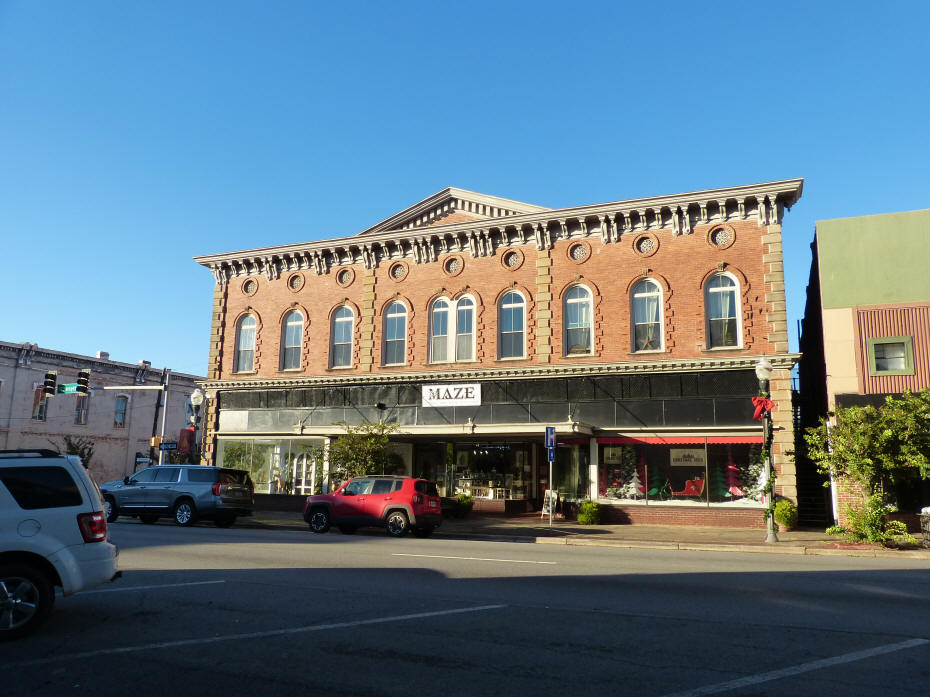
Built in 1883, the Renaissance Revival type
Sheffield Hardware Company called itself "South Georgia's Most
Complete Hardware Store." Today, it is
The Maze, an antique and gift store mall with everything
from antiques to clothing. I went down into the basement and
noted what looked like the original brick floors. It won the
best window decoration for Christmas this year.
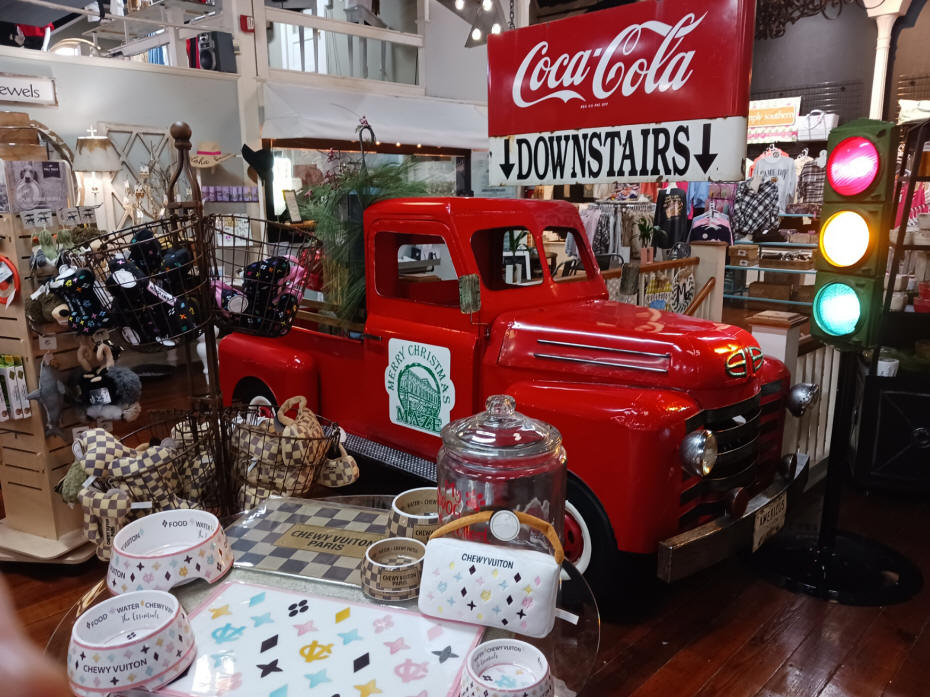
Americus Municipal Building

Even the
visitors' center is housed in a historic building. The
Italian Renaissance building was completed in 1910 and had gone
through changes in name and uses. Originally, it was a two-story
building used for the post office and federal agencies.
Congressman Charles Crisp had a third floor and elevator added
in 1933. When the city got a new post office in 1969, the city
acquired it and renamed it the Municipal Building.
There are so many other historic buildings,
and that's not even mentioning the dozens of beautiful historic
homes here. You really need to visit Americus and see for
yourself.
Public Disclosure
Please Read
FTC has a law
requiring web sites to let their readers know if any of the
stories are 'sponsored' or compensated. We also are to
let readers know if any of our links are ads. Most are not.
They are just a way to direct you to more information
about the article where the link is placed. We have several ads
on our pages. They are clearly marked as ads. I think
readers are smart enough to know an ad when they see one but to
obey the letter of the law, I am putting this statement here to
make sure everyone understands. American Roads and Global
Highways may contain affiliate links or ads. Further, as their
bios show, most of the feature writers are professional travel
writers. As such we are frequently invited on press trips, also
called fam trips. On these trips most of our lodging, dining,
admissions fees and often plane fare are covered by the city or
firm hosting the trip. It is an opportunity to visit places we
might not otherwise be able to visit. However, no one tells us
what to write about those places. All opinions are 100% those
of the author of that feature column.
|
Search our site
We'd love to have you follow on social media. please use our hashtag,
#ARGH
|

 |
 |

Pintrest |

Email us
You can order autographed copies of
my books at
KatysWorld.
My newest is
American Music: Born
in the USA
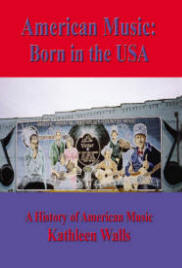
|
|



